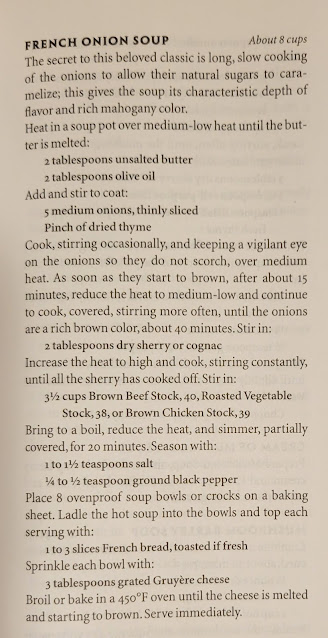This brings us to cookbooks. One of the earliest American examples of what we think of as
a proper cookbook dates back to 1903 with Marion Harland's Complete Cookbook: A Practical And Exhaustive Manual Of Cookery And Housekeeping. If any of our readers find a copy of this treasure, they
should make sure to have a good internet connection so they can look up some of
the dated terms and ingredients, not to mention some of the odd measurements,
such as "half a cone" of sugar or "a nickel of yeast". Even so, this book contains quite a bit of useful
information, as well as a glimpse into a society and culture long passed away.
I hope everyone is familiar with the classic Joy of Cooking by Erma Rombauer, a cornerstone of any cookbook collection. It first
hit bookstore shelves in 1936 and has been in continuous publication ever
since, with editions regularly updated with new recipes and information.
A pet peeve of mine is exemplified by this otherwise
excellent book, and that’s the recipe listing itself. I prefer having all the
ingredients at the top, followed by the steps below. When they are all mixed
together I find it quite aggravating.
A sample recipe from
the Joy of Cooking.
Note the ingredients interspersed with the recipe.
Note the ingredients interspersed with the recipe.
I’m a fan of older and unusual cookbooks and always keep my
eyes open at yard sales and estate sales. While my wife has established a limit
due to space requirements, I can usually find something of particular interest
to us both. One of our goals with the cookbooks we own is to try and make a recipe from each of them at least once a year. If we can’t manage to do even that, it’s marked for demotion; eventually, it may be passed on to a friend or donated.
Most of the cookbooks
stored in the author’s kitchen
(along with some nature books on the top right).
(along with some nature books on the top right).
An excellent online resource for these "time portals of food" is the Internet Archive's Cookbooks and Home Economics category. There are a variety of online resources for recipes as well: two that I make somewhat regular use of are Instanthome.com and Allrecipes.com, though there are plenty
more out there. For entertainment and education, there’s always the engaging
B. Dylan Hollis
and Alton Brown on YouTube.
Just like with any other skill, whether when just getting
started or revisiting something after time has passed, it’s always good to read
the manual.




No comments:
Post a Comment